Best marine binoculars designed for use by sailors at sea
The best marine binoculars let you take to the high seas without a high price or high drama!
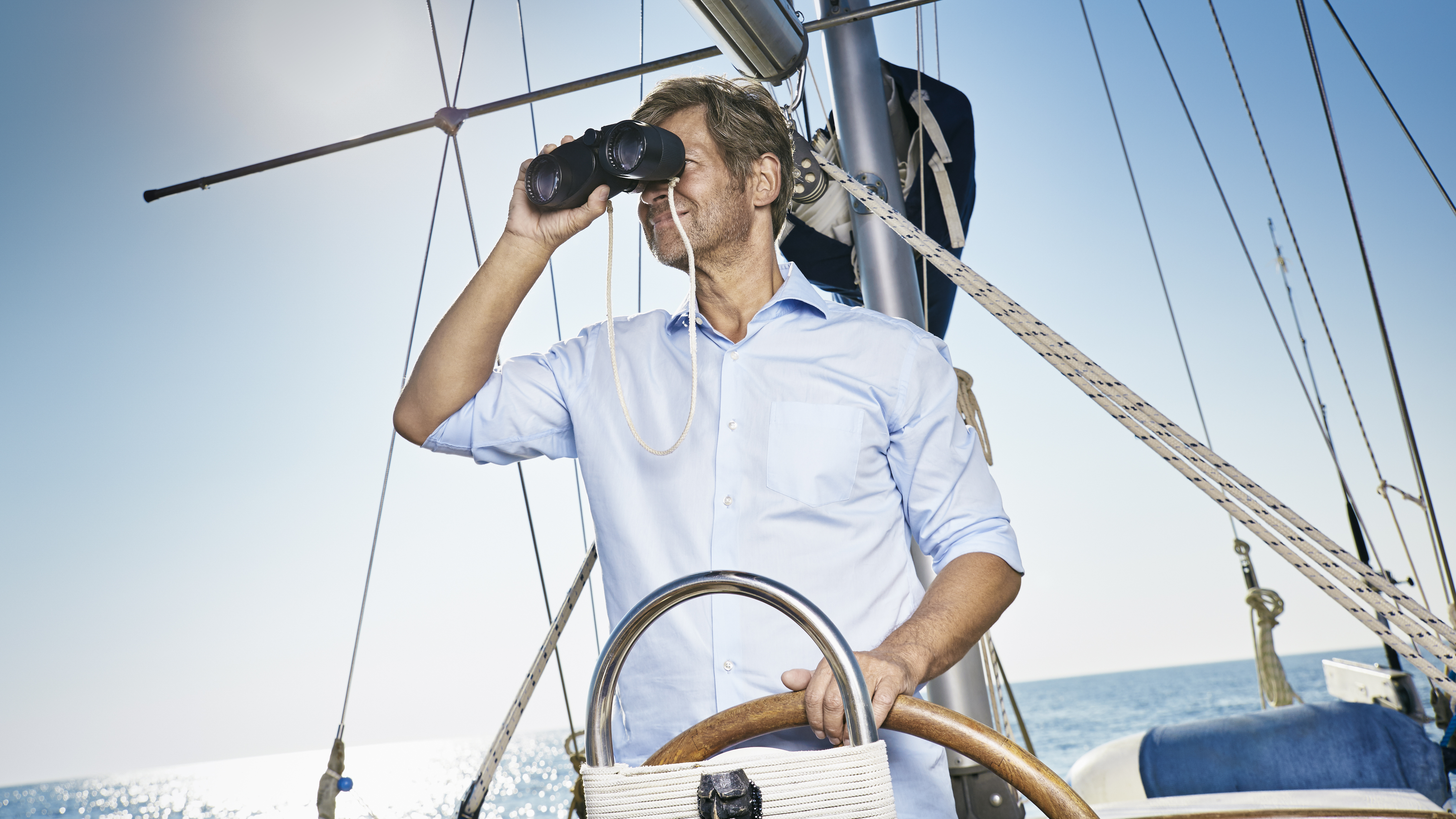
With the best marine binoculars, you can really make a splash! We help you choose the best saltwater-ready binoculars for seafaring, yachting, and other adventurous watery pursuits...
It goes without saying that when choosing the best pair of marine binoculars out there, decent waterproofing is going to be high on our list of essential features, as is an ability to survive being submerged for extended periods should the device end up in the ‘drink’.
We’ll also examine magnification power, lens quality, and, of course, value for money in terms of how much bang we’re getting for our buck. But there are some key things that make marine binoculars rather different from the candidates in our main best binoculars guide…
What's different about marine binoculars
Why you can trust Digital Camera World
Ideally, binoculars for use at sea will have some or all of the following features, which mark them out from their landlubber counterparts:
Nitrogen filled: a step in the manufacturing process that expels all air and any possible trace of moisture from the optics and replaces it with 'dry' nitrogen gas to prevent fogging.
Individual focusing: regular binoculars have a single focus adjustment for both eyes. It's quick and simple for multiple users. Still, marine binoculars often have individual adjustments for each eye – these will be better adapted to their owners, and don't need readjusting once set up, making them good for low light.
Reticle scale: a navigational aid that uses a horizon line and a vertical scale for measuring the distance of objects of known height (such as a lighthouse) – sometimes an essential navigational aid.
Compass: not just a clip-on gadget, but on the best marine binoculars these project a compass bearing on the image – another essential navigational aid.
Floating strap: some marine binoculars float on water, ideal for boat use - but those that don't are usually supplied with a strap that will function as its flotation device.
Take note of the specification quoted, too, such as 7x50, where the first number quoted is the magnification power and the second is the size of the objective lens in use. A larger magnification will obviously let us see further. In contrast, a physically larger objective lens measurement should let in more light, so the image will be brighter and we can continue getting good results as natural light starts to fade at the end of the day.
The trade-off however is bigger lenses mean physically more significant, so typically heavier, binos. It can therefore be worth literally weighing up which pair will suit you best and give the clearest view – especially on the deck of a moving boat!
Magnification may appear more modest on these marine binocular examples than on regular binos for use on land; this is because the likes of a 7x magnification are what’s required to maintain a decent view when the boat is rocking – higher magnifications may make it hard to achieve a steady image at all.
So without further ado, let’s drill into what we consider some of the best marine binoculars around.
best marine binoculars: our top picks
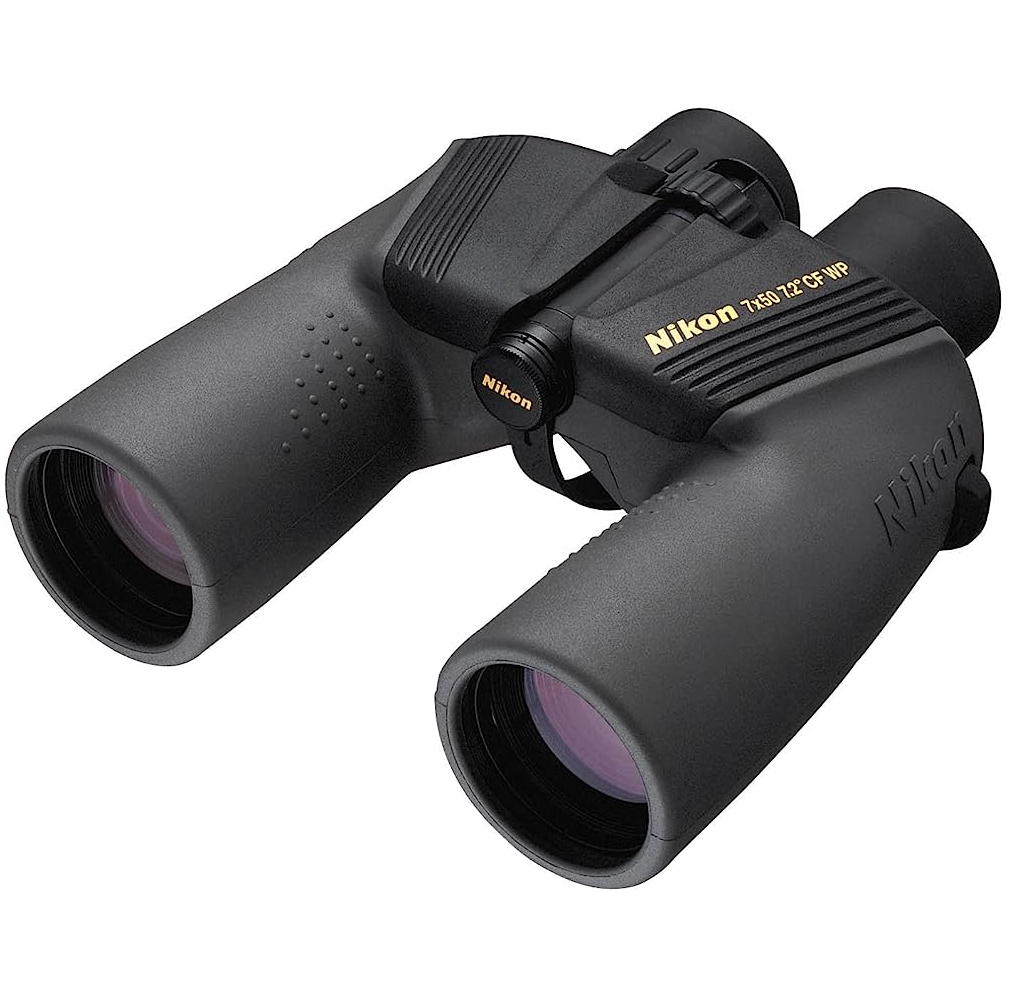
Best overall
You can always rely on Nikon with its long history of optical excellence in the photographic trade to deliver binos in the decent, um, nick, in spite of the relatively compact proportions here.
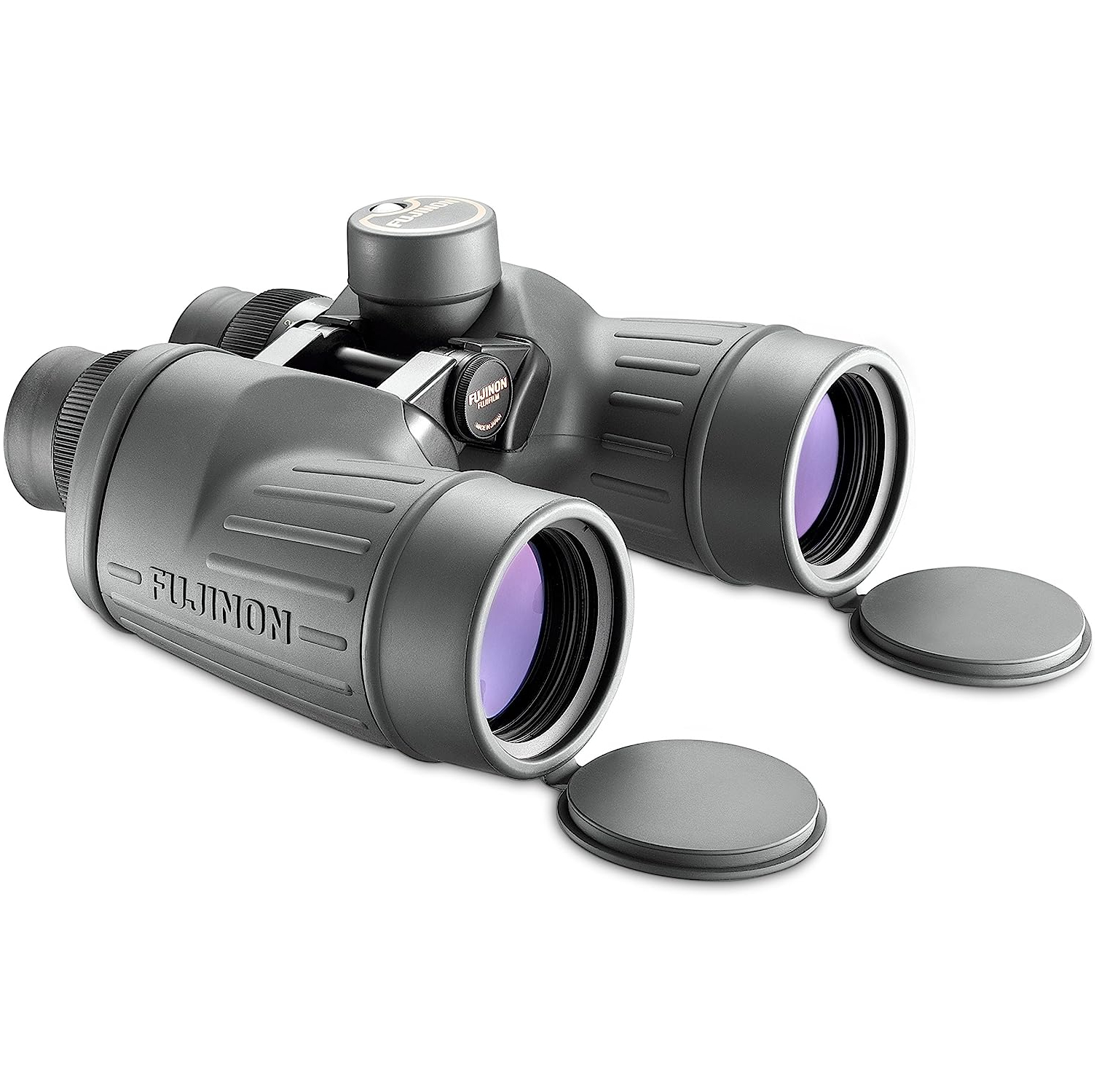
Best for heavy duty
These high-end, heavy-duty binoculars from the Fujifilm brand rendered in grey would look as equally at home aboard a warship as a luxury yacht.
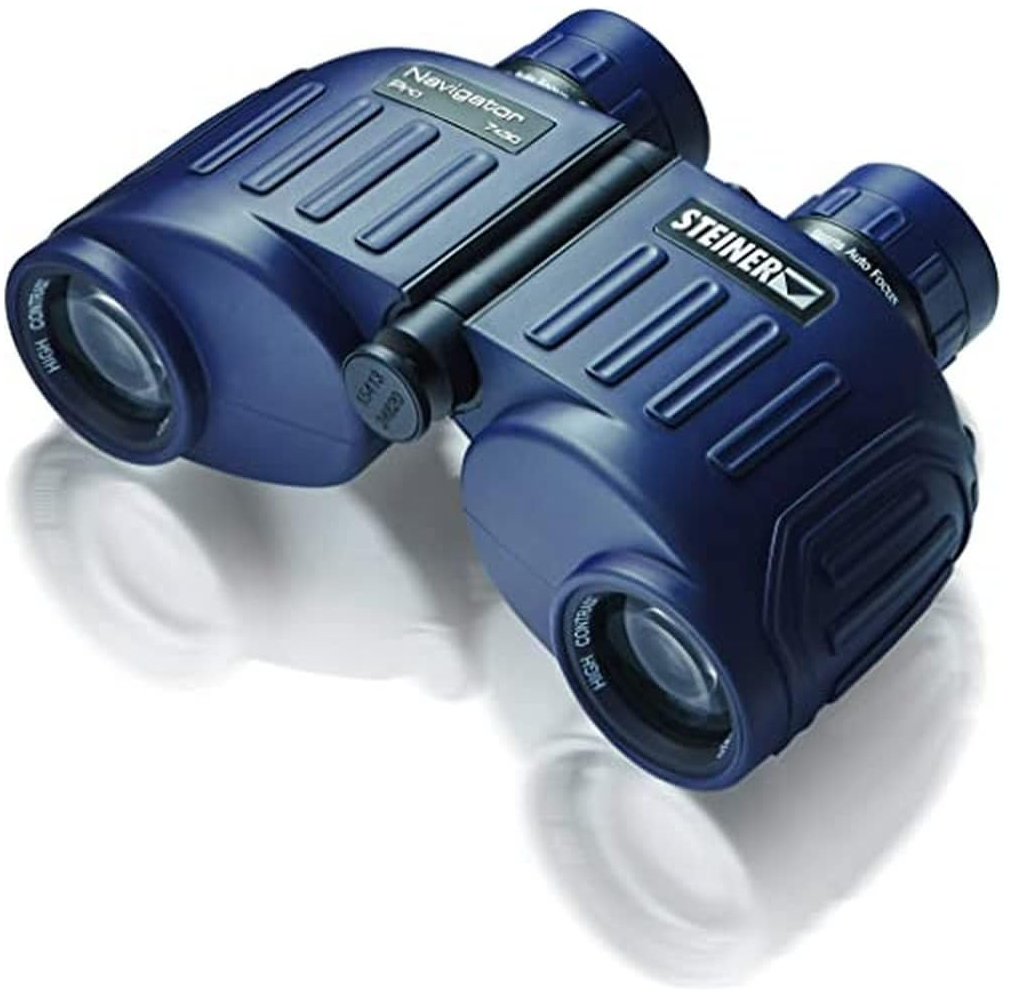
Best for rough waters
Allowing for a more comfortable, stronger grip, thanks to a ridged, water-repelling surface, the latest generation offers a new open bridge system that promises to make adjustments easier.
The best marine binoculars
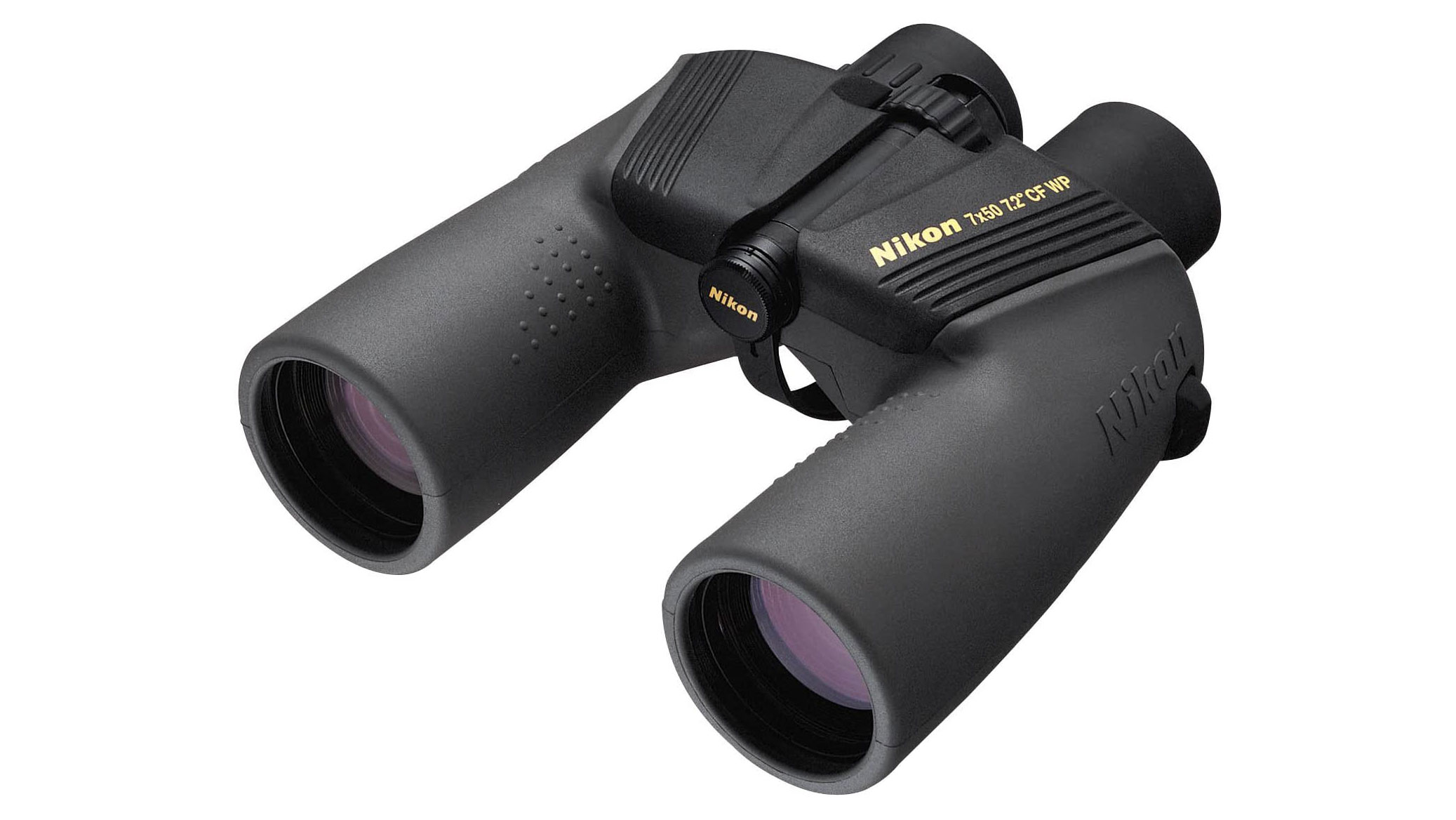
1. Nikon Oceanpro 7x50 CF WP Binoculars
Specifications
Reasons to buy
Reasons to avoid
You can always rely on Nikon with its long history of optical excellence in the photographic trade to deliver binos in the decent, um, nick, in spite of the relatively compact proportions here. Naturally, this durably rubber-armored, polycarbonate construction device with a central focus knob is waterproofed courtesy of its O-ring sealed body.
It also it comes with a floating neck ‘belt’ so it doesn’t disappear beneath the waves if it’s accidentally flung overboard in rough seas. With a 33ft close focus distance, it likewise features a comparably generous 22.7mm of eye relief, allowing for comfortable viewing, as well as a wide 378-foot field of view, so as much of the ocean as possible is within the user’s vision. Look out for the version of these binos that features an additional compass built-in, if that feature would further aid your voyages of nautical discovery.
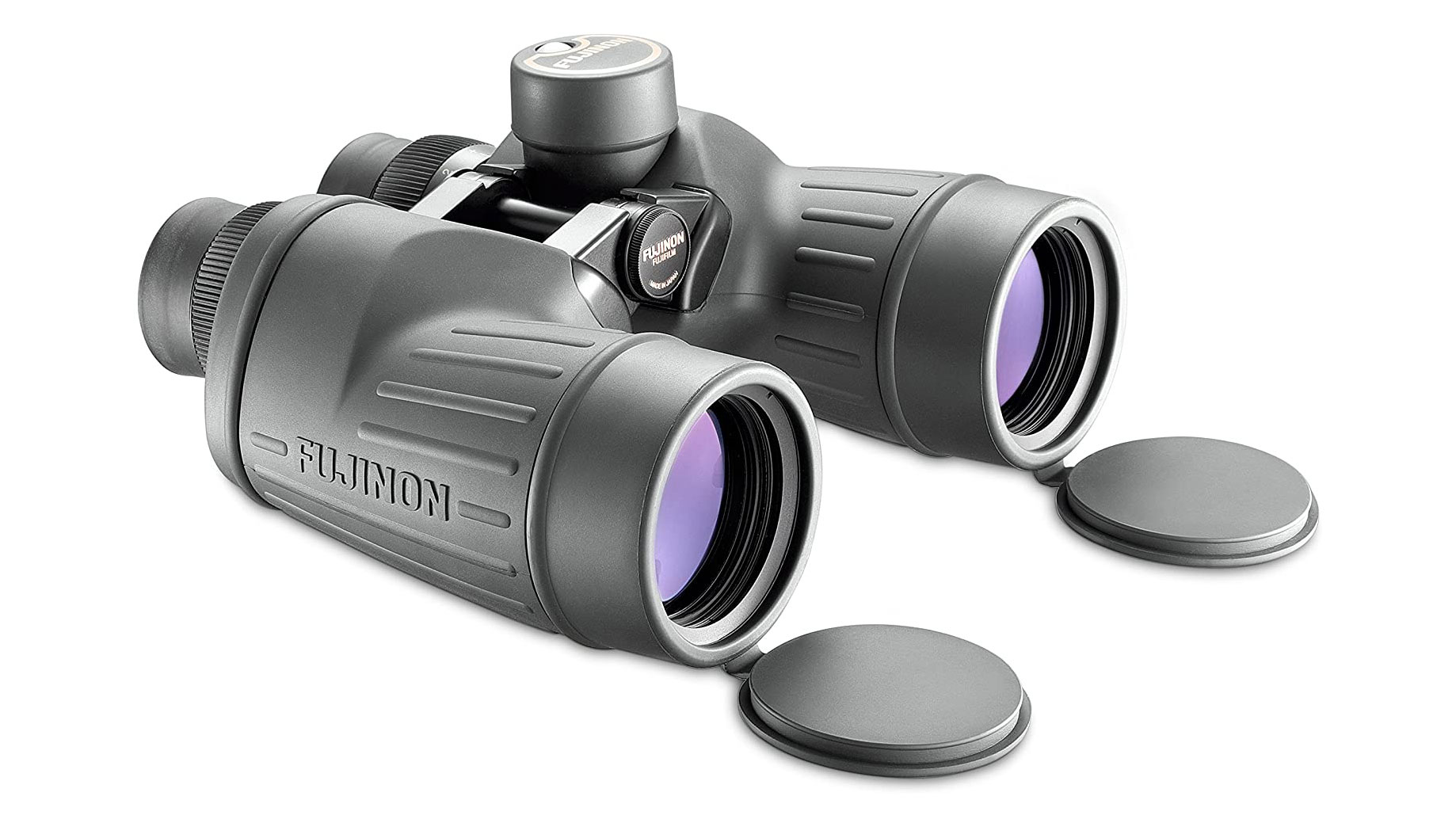
2. Fujinon Polaris 7x50 FMTRC-SX
Specifications
Reasons to buy
Reasons to avoid
These high-end, heavy-duty binoculars from the Fujifilm brand rendered in grey would look as equally at home aboard a warship as a luxury yacht. Just shy of 2Kg, they’re a fairly weighty option too, but cram in all the bells and whistles we might expect, including a world compass and lens coatings to ensure the best light transmission – and so a great view – is possible.
The ridged, rubberized exterior also ensures a firm and steady hold, while protecting the binoculars against accidental knocks. That large 50mm objective lens will deliver a clear view even at dusk, while allegedly even the likes of the US Navy are fans. The only downside is all of these coats; expect to pay a premium price for these premium binos.
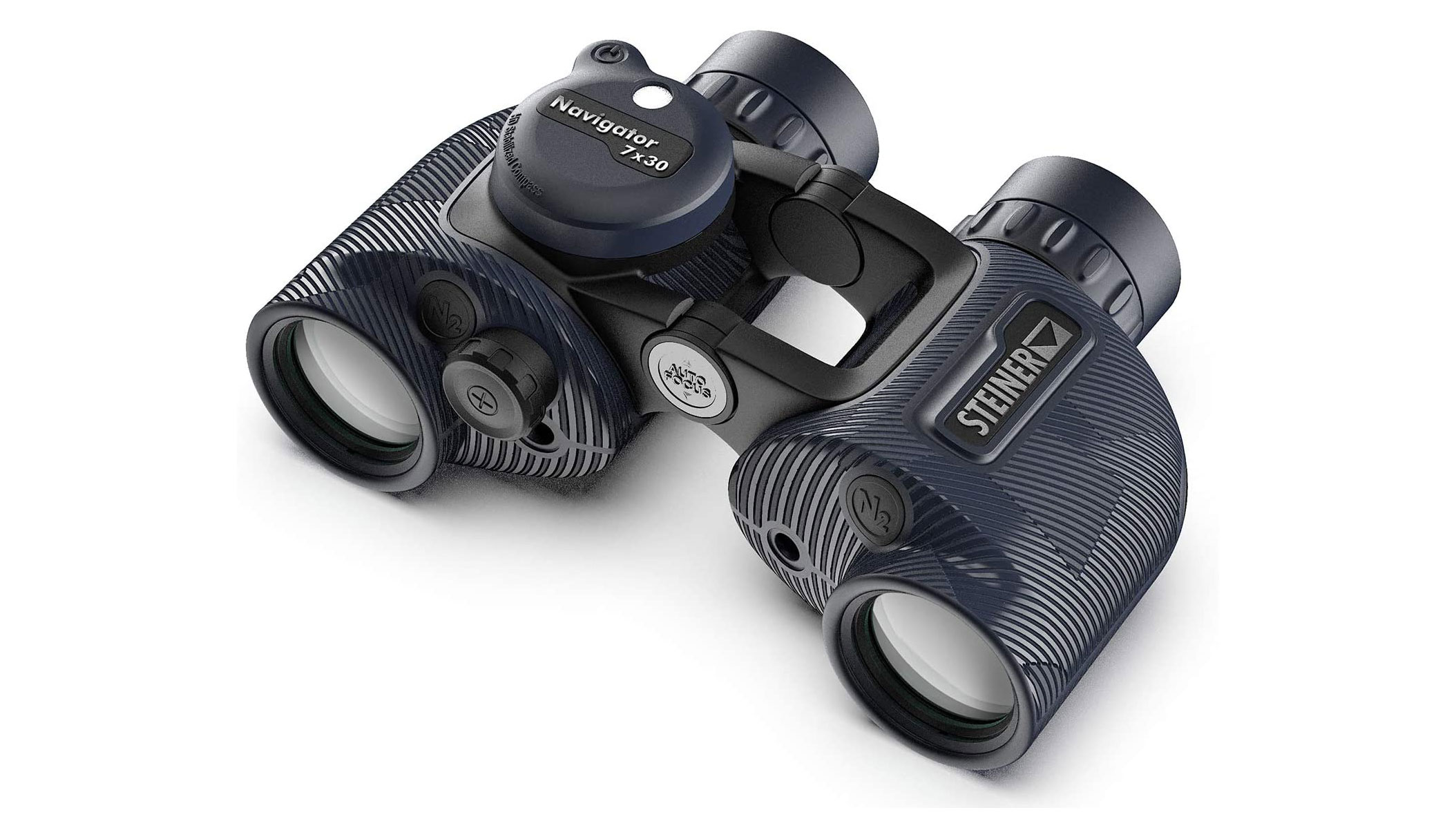
3. Steiner Navigator Pro 7x30 Marine Binoculars
Specifications
Reasons to buy
Reasons to avoid
Steiner’s Navigator binoculars have been around for a while in their ‘Pro’ iteration, but the 7x30 and 7x50 options – where the ‘7’ is the magnification offered and the second figure the size of the objective lens – have had a design revamp to improve handling.
Both options come either with or without a built-in, shock-absorbing compass, with roughened exterior promising to deliver steady viewing even in rough seas. Look for the models with the ‘c’ suffix, like the more affordable of the two we’re highlighting here, if that compass ‘extra’ may prove useful.
As well as allowing for a more comfortable, stronger grip, thanks to a ridged, water-repelling surface, on the latest generation models a new open bridge system promises to make adjustments easier. Waterproofing is sufficient to withstand being dunked to depths of five meters, while a 10-year guarantee offers further peace of mind to prospective Steiner owners.
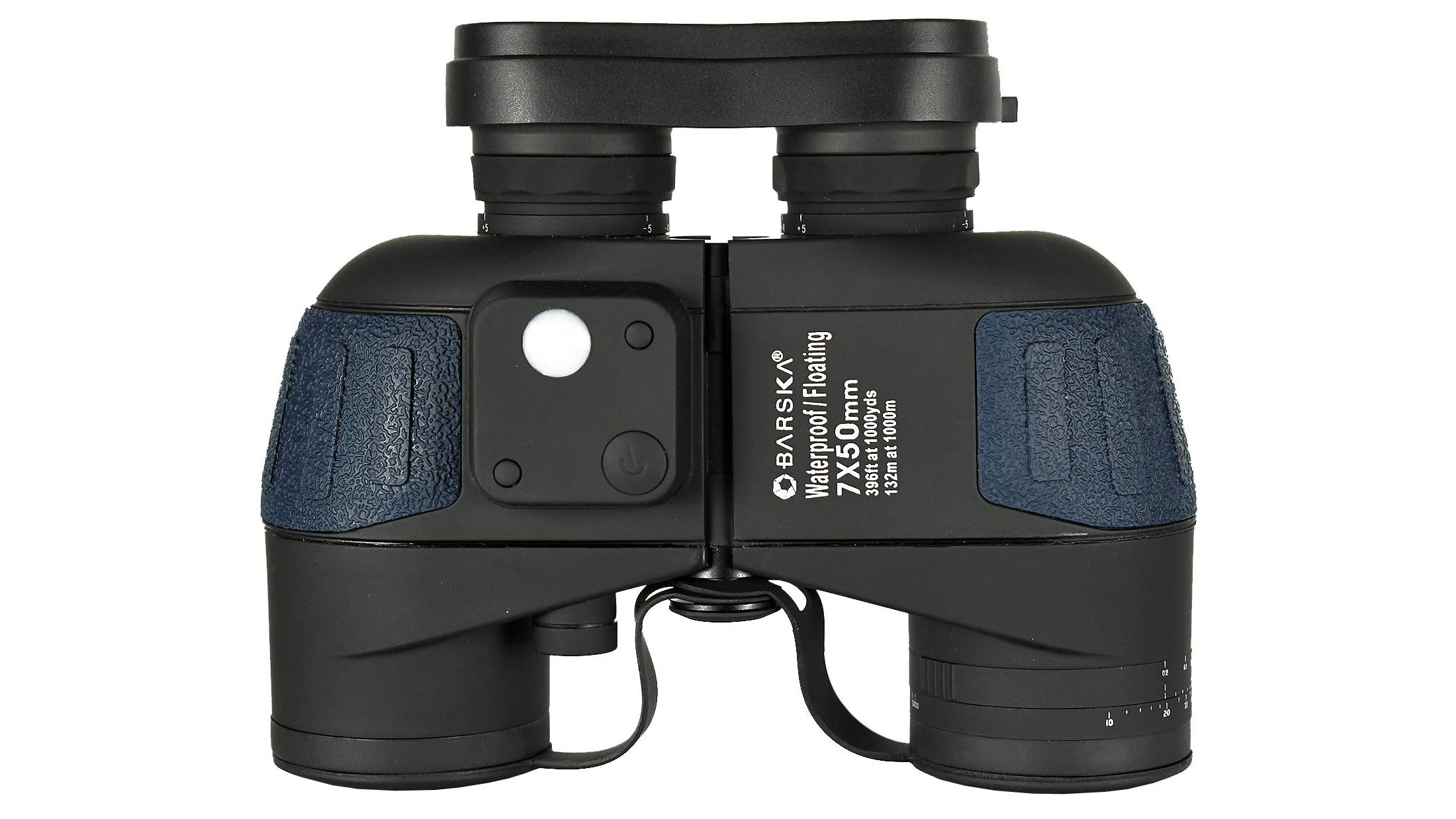
4. Barska Deep Sea 7x50 Floating Binoculars
Specifications
Reasons to buy
Reasons to avoid
We’re less familiar with Barska as a brand, but this compact pair of binoculars half the weight of some of its close competitors seems to offer a decent degree of bang for our buck.
These American binoculars tick boxes for the required O-ring sealed waterproof, nitrogen purged innards, non-slip rubberized exterior, plus BAK 4 prism, multi-coated optics to produce a clear image into the bargain.
On top of this, we get an internal rangefinder and directional compass included, while the device floats if it ends up in the ‘drink’. These binos seem to offer value for money for those who want a pair of marine binoculars for less than the cost of berthing in an actual marina overnight.
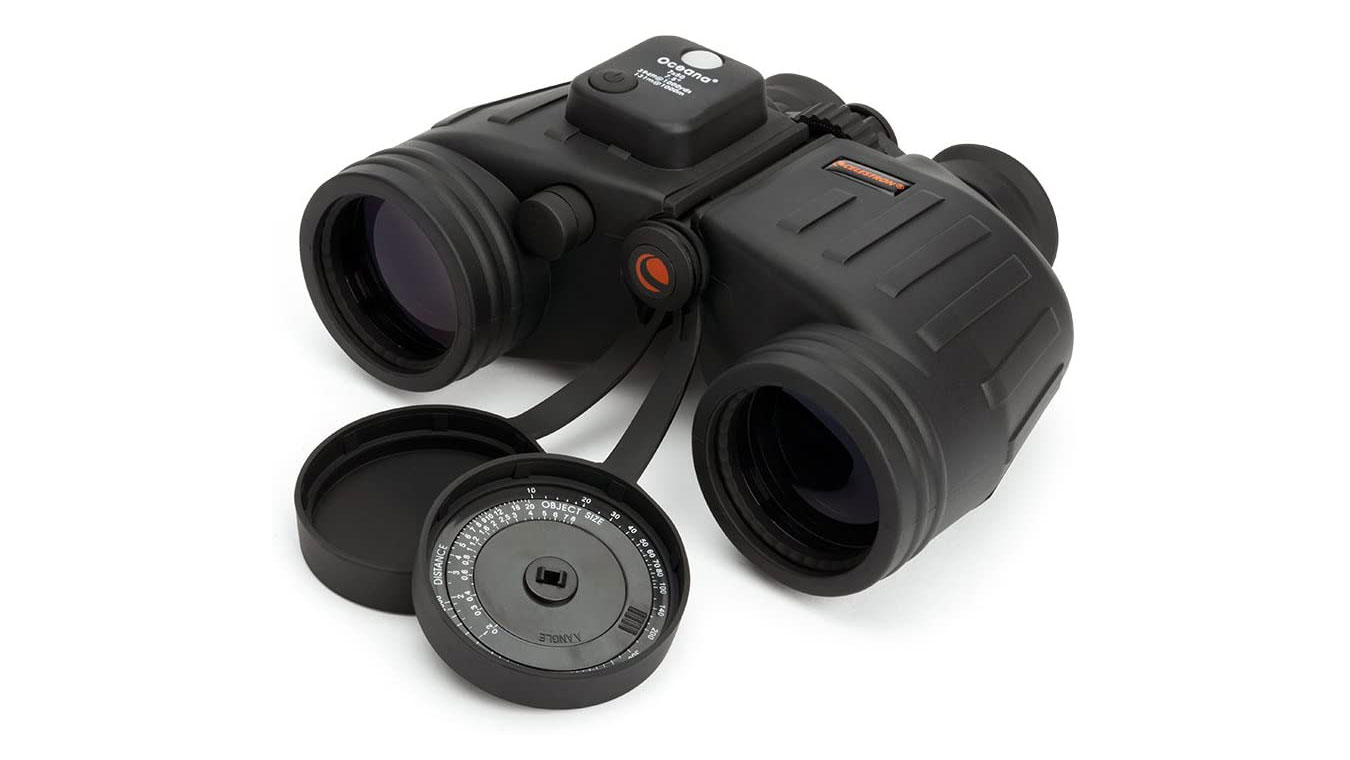
5. Celestron Oceana 7x50 Binoculars
Specifications
Reasons to buy
Reasons to avoid
Celestron is another big brand in the world of binoculars, so naturally, it offers an ‘Oceana’ model suitable for the marine market. Like the others here the core specifications are once again a 7x magnification wedded to a 50mm lens, encased within a waterproofed aluminum construction, its rubber-armored shell offering comfortable 22mm eye relief and multi-coated optics for optimum light transmission and visibility.
We also find an illuminated compass usefully on board and, more unusually, a distance calculator dial. Plus, unlike many others, this one includes a tripod adapter (the actual tripod is extra) should users want to try and increase stability. Naturally, it’s waterproofed and nitrogen purged too to prevent fogging, not leaving many boxes un-ticked as far as this all-encompassing example goes. Impressive stuff.
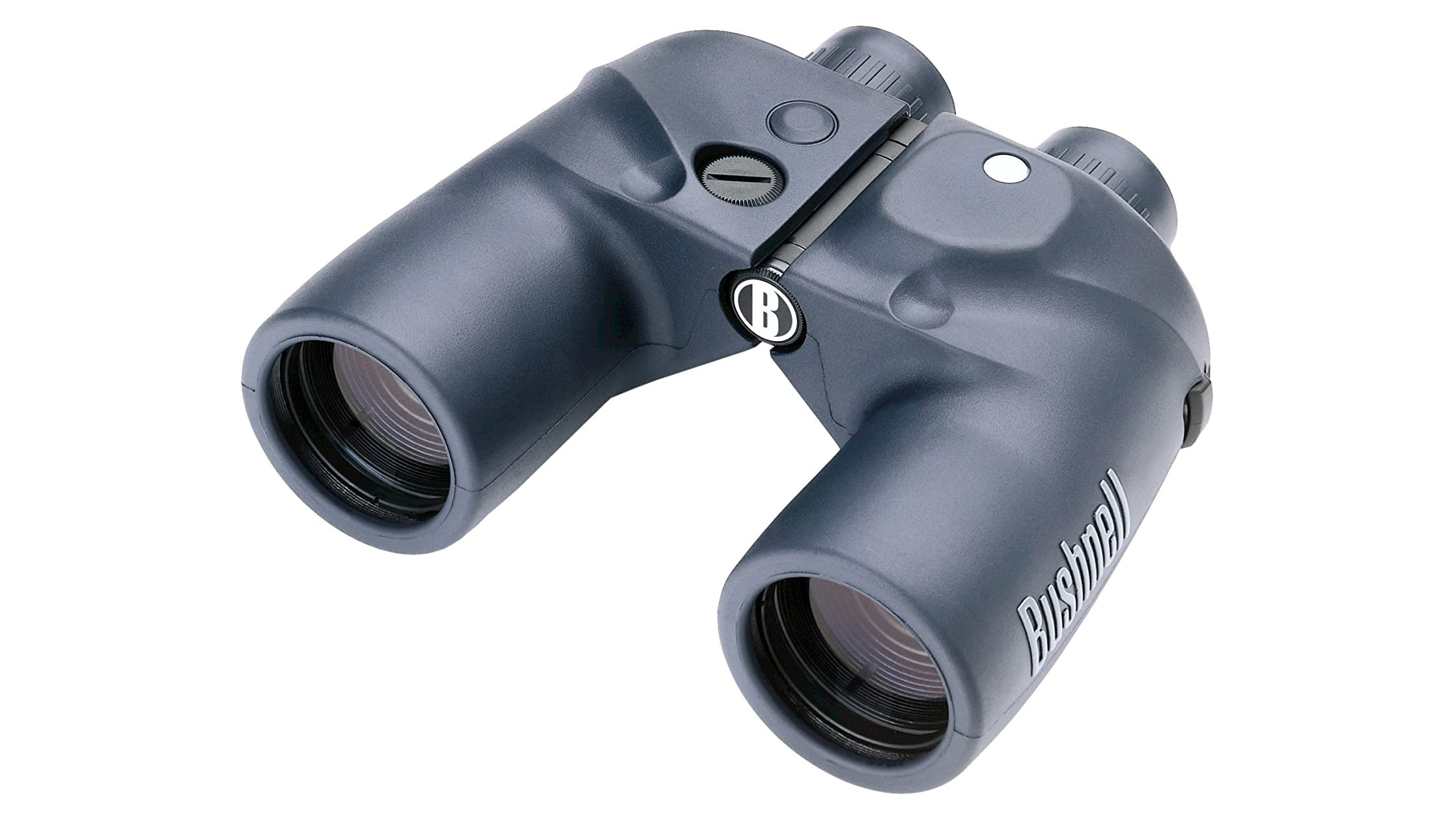
6. Bushnell 7x50 Marine Binoculars with compass
Specifications
Reasons to buy
Reasons to avoid
The USA-based brand Bushnell is known for its good value to build wedded to a decent performance, so this waterproof, buoyant, and saltwater corrosion-resistant model marrying a 7x magnification to a large 50mm objective lens is worth further investigation.
It is a legit O-ring sealed and covered in rubber ‘armor’ to absorb shock while providing a tighter non-slip grip for wet-handed use, but it’s also nitrogen purged to prevent fogging. The specification continues to impress as we get BaK-4 prisms for bright and clear viewing plus a digital illuminated compass to help avoid mariners from getting lost at sea. In short, this one suggests itself as literally a purchase idea worth floating.
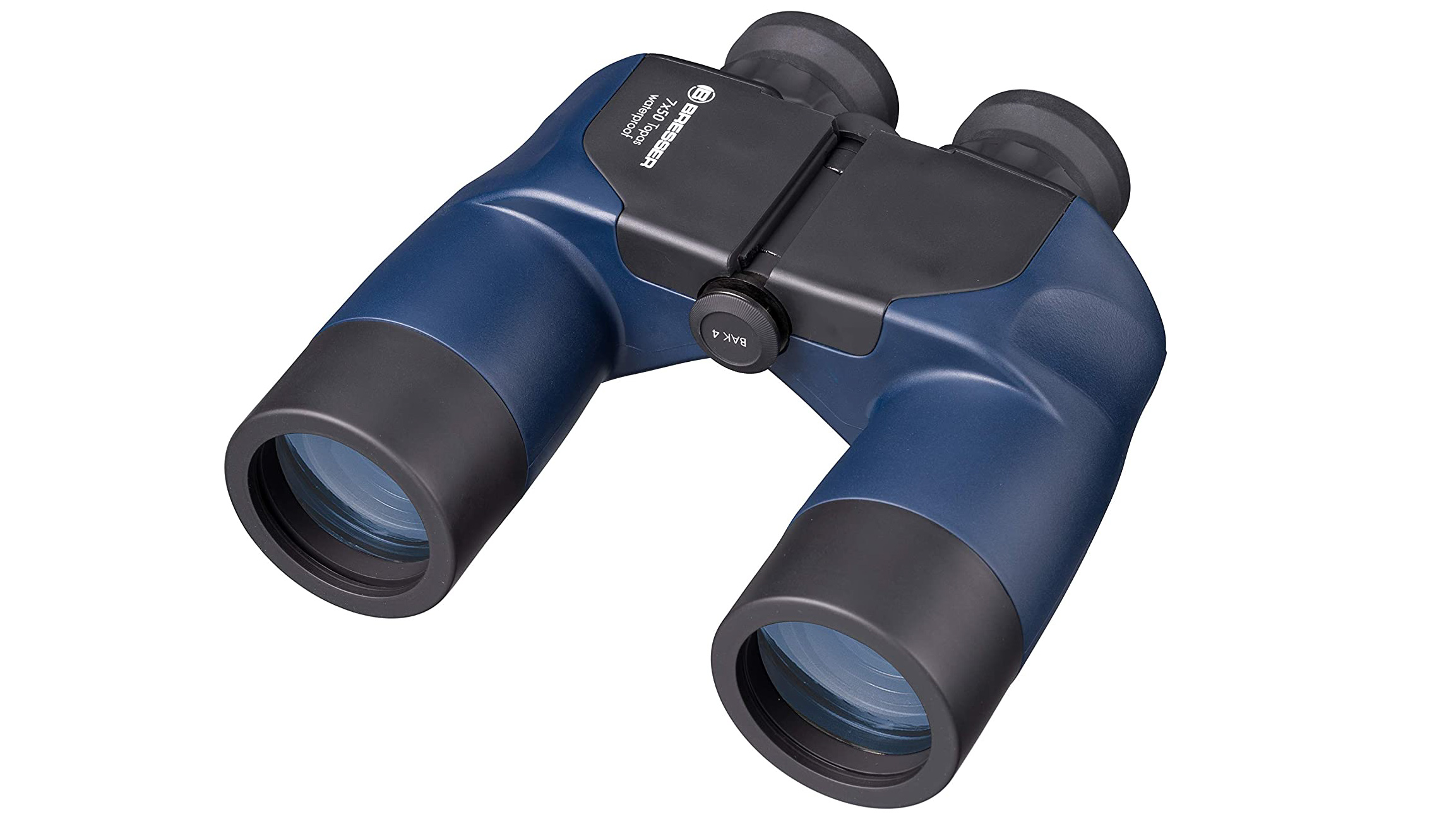
7. Bresser Topas 7x50 WP
Specifications
Reasons to buy
Reasons to avoid
Bak-4 Porro prism construction binoculars from the German brand are made for observation in wet environments, complete with an ergonomic rubber armored exterior and the usual degree of waterproofing and shockproofing.
For seafaring types, here we get a built-in illuminated compass and a means of working out distance, via a ring scale provided on the lens nozzle. Foldable eyecups provide comfort whether the user is wearing spectacles or not, while a floating belt is provided should slippery hands result in the binoculars being dropped overboard. A good magnification coupled with a large objective lens to aid view rounds off the package.

8. Svbony SV27
Specifications
Reasons to buy
Reasons to avoid
Looking to make a splash with your viewing habits but don’t want to splash the cash with it? This relatively inexpensive pair of marine binos feature a built-in rangefinder compass and are fog-proofed and O-ring sealed waterproofed to IPX7 level.
Interestingly, focus can be individually adjusted for each eye, while a natural rubber exterior prevents slippage when in use in the wet. Unexpected at the affordable price is a tripod adapter fitting for mounting on a tripod if desired. Furthermore, these marine binos can be dunked underwater to a depth of a meter, and for up to 30 minutes, and suffer no ill effects claims their manufacturer.
What we look for with marine binoculars
We test this equipment within the field, on moving subjects and landmarks for our buying guides, and look for marine binoculars that combine magnification, good construction, and image clarity, which can be used and withstand a day on the sea. Budget is also an indicator and within this guide, you will find marine binoculars to suit everyone's budget and needs.
Read more:
Best binoculars
Best rangefinder binoculars
Best binocular harness
Best budget binoculars
Best binocular tripod adapter
Best monoculars
Best night vision goggles
Get the Digital Camera World Newsletter
The best camera deals, reviews, product advice, and unmissable photography news, direct to your inbox!

For nearly two decades Sebastian's work has been published internationally. Originally specializing in Equestrianism, his visuals have been used by the leading names in the equestrian industry such as The Fédération Equestre Internationale (FEI), The Jockey Club, Horse & Hound, and many more for various advertising campaigns, books, and pre/post-event highlights.
He is a Fellow of the Royal Society of Arts, holds a Foundation Degree in Equitation Science, and holds a Master of Arts in Publishing. He is a member of Nikon NPS and has been a Nikon user since his film days using a Nikon F5. He saw the digital transition with Nikon's D series cameras and is still, to this day, the youngest member to be elected into BEWA, the British Equestrian Writers' Association.
He is familiar with and shows great interest in 35mm, medium, and large-format photography, using products by Leica, Phase One, Hasselblad, Alpa, and Sinar. Sebastian has also used many cinema cameras from Sony, RED, ARRI, and everything in between. He now spends his spare time using his trusted Leica M-E or Leica M2, shooting Street/Documentary photography as he sees it, usually in Black and White.
